Books by carlo bianchini

Con l’obiettivo scientifico di delineare un contributo innovativo entro il vasto quadro storiogra... more Con l’obiettivo scientifico di delineare un contributo innovativo entro il vasto quadro storiografico esistente, il volume affronta la lettura del Tempietto realizzato da Bramante per i Re Cattolici Isabella di Castiglia e Ferdinando di Aragona non come monumento isolato ma inserito nel contesto del monastero di San Pietro in Montorio e in stretto rapporto con la chiesa, l’altra e più antica emergenza architettonica del complesso francescano divenuto sede della Real Academia de España.
Un’ampia raccolta di saggi offre inediti punti di vista sulla committenza, sulla datazione, sulla progettazione, sulle soluzioni architettoniche e sulle caratteristiche costruttive del Tempietto a partire da approfondite ricerche storiche, da indagini condotte con l’uso di diverse tecnologie (dalla prospezione con georadar alla termografia a infrarossi, alla videoendoscopia), da due nuovi rilievi del monumento (con tecniche tradizionali e da scansione tridimensionale) e da quello dell’intero complesso monastico.
Contributi di: Laura Asor Rosa, Carlo Bianchini, Francesco Borgogni, Valeria Caniglia, Flavia Cantatore, Livia Fabbri, Francesco Paolo Fiore, Carlo Inglese, Fernando Marías, Lucia Morganti, Rossana Nicolò, Elisabetta Pallottino, Enrico Parlato, Antonio Sánchez-Barriga Fernández, José Sancho Roda, Manfred Schuller, Valentina White, Paola Zampa.

Gerbert of Aurillac represents one of the most relevant personalities of the European medieval cu... more Gerbert of Aurillac represents one of the most relevant personalities of the European medieval culture, being a prolific scholar as well as an acknowledged teacher especially as tutor of Emperors Otto II and Otto III. A disciple himself of Atto, during his long and successful career, first as a teacher in Reim’s Cathedral
School, then as Abbot of the monastery of Bobbio, Archbishop of Ravenna and finally as Pope Silvestre II (999–1003), Gerbert always encouraged and promoted the study of the quadrivium (arithmetic, geometry, music and astronomy) also through the reintroduction to western Europe of ancient Greek-Roman scientific
culture, especially in the augmented Arab versions. Gerbert’s influence on western scientific thought refers not only to theory (i.e. the arabs’ decimal numeral system or some of Euclid’s theorems) being instead always balanced with practical applications that involve instruments (abacus, armillary sphere, astrolabe, etc.) and that immediately affect the lives of common people.
Attraverso lo studio sistematico dell’opera di Guarini ed in particolare delle parti del suo Eucl... more Attraverso lo studio sistematico dell’opera di Guarini ed in particolare delle parti del suo Euclides adauctus... relative all’Ortografia e ai metodi per determinare lo sviluppo della superficie dei solidi (trattati XXVI - De Proiecturis e XXXII - De superficies corporum in planum redigendis), si perviene ad alcune interessanti conclusioni circa le linee di ricerca geometrica nel campo della rappresentazione sviluppatesi nel corso del XVII secolo. Si mette in luce, inoltre, lo strettissimo legame intercorrente tra la codifica del Metodo della Doppia Proiezione Ortogonale e la pratica della Stereotomia. Inevitabile un raffronto tra il successivo Metodo di Monge e le procedure sviluppate da Guarini.
Papers by carlo bianchini
Proceedings of SPIE, Jan 28, 2007
abstract When TOF laser scanners were introduced on the market, their performances were rather po... more abstract When TOF laser scanners were introduced on the market, their performances were rather poor, having in general a measurement uncertainty in the range of centimeters. For this reason it was clear that their application was definitely limited to environment and architecture survey, where the large size of the involved objects makes acceptable the relative measurement error. But with the progressive improvement of technology, and the consequent increase in the measurement precision, the potential range of purposes have ...

Nexus Network Journal, Jan 8, 2015
Vitruvius explains in detail how to design Latin and Greek theatres through a geometrical approac... more Vitruvius explains in detail how to design Latin and Greek theatres through a geometrical approach that does not involve the problem concerning cavea's capacity which is the starting requirement of every building for spectacles. Two treatises, Stereometrica and De mensuris, written during the first century A.D. by Heron of Alexandria, explain through numerical examples some relevant formulas aimed at calculating the capacity of buildings like theatres, as well as circuses and amphitheatres. Thanks to new and accurate surveys of some buildings for spectacles, we will show some applications of these formulas and how the dimensioning problem was converted by Heron into a particular case of squaring the circle. Keywords Building type (theatre, amphitheatre) Á Design analysis Á Design theory Á Geographical area (Italy, Spain, Algeria, Jordan) Á Historical era (classical age) Á Historical treatise Á Algorithms Á Arithmetic progressions Á Circles Á Geometry Á Geometric analysis Á Grids Á History of mathematics (Heron of Alexandria) Á Measurement/measuring systems Á Modules Á Proportional analysis Á Shapes (circular ring) Á Squaring the circle (quadrature of the circle) Á Symmetry
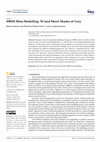
ISPRS International Journal of Geo-Information
The paper aims at investigating modelling strategies in HBIM context to identify at what extent t... more The paper aims at investigating modelling strategies in HBIM context to identify at what extent the final use of the model might affects, or should affect, the modelling approach itself. Moreover, the discussion wants to shed light on the possibility of connecting in just one digital environment several instances connected to the building. These aims will be discussed presenting and evaluating two different modelling approaches: the “black box” modelling and the “white box” model-ling. The two terms are partially borrowed from computer science to explain two types of testing. The “black box” testing is performed without any preliminary knowledge about the system functionality and internal components; on the contrary, the “white box” testing, implies a full knowledge of the system. These two approaches will be compared to two ways of conceiving a building information model. In conclusion, the paper will investigate the possibility to integrate in just one model, the grey box model, t...

The aim of the research is to identify method and operational references at different scales, urb... more The aim of the research is to identify method and operational references at different scales, urban and territorial, to be applied to territories affected by earthquakes, useful for defining prevention and reconstruction strategies. In particular, the activity focuses on Accumoli, and takes concrete form in the construction of a pilot program for reconstruction, defining integrated and coordinated reconstruction actions based on resilience of the affected areas. With three specific features: addressing multiple scales (not just individual buildings, but settlements and territories), considering various topics and subjects (besides physical reconstruction, functional aspects and relationships and different actors involved), and pursuing prevention purposes in relation to possible future events within a sustainable local development perspective. On the basis of experience and knowledge accumulated as a result of natural destructive events and reconstructions that have affected our cou...
The process of designing an architectural project has always been among the most explored fields ... more The process of designing an architectural project has always been among the most explored fields of research. On the one hand, it proves to be a historical document of cultural heritage; on the other hand, however, it allows the researcher to grasp the relations obtaining between the design idea and its realization. In this frame of reference the present study of worksite tracings is focused on detail designing. The study of these signs con- ducted by integrating the traditional surveying techniques with the technologies of massive ac-quisition as well as with the digital methodolo-gies of model constructing has been carried out in order to grasp the relations between the idea and its realization by continuously comparing real and ideal models, thus extending the knowledge and the documentation of ancient artifacts.

Graphic Imprints, 2018
The method of incising in stone the working drawing of structural and decorative elements at the ... more The method of incising in stone the working drawing of structural and decorative elements at the real scale (Αναγραϕeυζ, Anagrapheus) goes back to ancient times. This technic was applied to conceive, represent and control the execution and the assembly of architectonic elements. In more recent literature on the subject focus of attention has shifted from the purely archaeological point of view to that of architectonic representation. The new approach is based on reading guidelines, geometries, traces of assembly and workmanship, wear surfaces—all employed in constructing architecture. Worksite tracing are executive drawings of the design that the architect realized to convey his design idea at a detailed scale. This operative methodology was used in ancient times in Greece and in Imperial Rome and it survived into later periods: romanesque, gothic and renaissance as evidenced by numerous cathedrals in France, England, Spain and Italy. The present research examines drawings found in ...
Documentation of archaeological structures encompasses a multidisciplinary approach that enables ... more Documentation of archaeological structures encompasses a multidisciplinary approach that enables analysis and interpretation from many fields. Nowadays, the representation of the archaeological-architectural survey is one of the most dynamic areas thanks to the development of systems for the acquisition and alignment of data describing the geometry, appearance and context of objects. The construction of models is in fact the starting point for all those activities aiming at the knowledge of archaeological heritage. Different operations - from cataloguing to preservation, from designing to restoration and valorization - begin to show the enormous potentialities connected with models obtained through 3D surveys.
It’s established that in the design and construc - tion of new buildings, BIM is a fundamental re... more It’s established that in the design and construc - tion of new buildings, BIM is a fundamental refe - rence especially when the standardization is the typical character of the project. As Architecture, with the management of the entire building pro - cess, requires standardization for greater eco - nomy, thanks to BIM tools the building process seems to have actually moved to a 2.0 phase; on the contrary, when BIM is applied to historical bu - ildings it still reveals not so adequate. In this framework, this paper will not discuss the differences between CAD and BIM or the un- doubted potential of BIM software from a tech- nical or operational standpoint; we would focus instead on the implication of BIM referring to the Representation disciplines and to the issues con- nected with its application to the existing built stock and especially to historic buildings.

Anagrapheus is the executive drawing of the decorative and structural elements made directly on p... more Anagrapheus is the executive drawing of the decorative and structural elements made directly on parts of built architecture by engraving in 1: 1 scale. It belong to an antiquity constructive methodology known as "worksite tracing”. They have a very important role in the different phases of the construction site: concept, representation, control, assembly of constructive and decorative elements. Nowaday, the known process of integrated survey make it possible to acquire the worksite tracing and extract digital models useful in the case of collapse, or neglect, or when there is any documentation of the building. This research focuses on the Cathedral of Terni, affected by an extended corpus of representatives worksite tracing of some architectural elements of the façade in 1: 1 scale. Through an historical analysis of the worksite tracing and an integrated survey, conducted alongside traditional techniques to methodologies for the 3D massive acquisition, it has been possible to build digital models that provide a valuable contribution to the knowledge and conservative operations. The value of the worksite tracing is in the possibility to employ real original drawings that provide unique information of some parts of ancient artifacts
SCIRES-IT : SCIentific RESearch and Information Technology, 2016
The promotion and preservation of Cultural Heritage in the 21st century are inextricably bound up... more The promotion and preservation of Cultural Heritage in the 21st century are inextricably bound up with innovative processes of acquisition, management and knowledge. Continuous technological progress and the digital revolution offer new tools and possibilities that can be applied to research. The development and enhancement of techniques for the mass acquisition and processing of this data creating 2D-3D models has made these processes fundamental to disseminating information on Architectural Archaeology. This paper describes the most recent results of the research activities originating from the Athena Project (Ancient Theatres Enhancement for New Actualities), which has entailed the study of six of the most famous Mediterranean Ancient Theatres: Merida, Petra, Jerash, Carthage, Cherchell and Siracusa.
Digital Modernism Heritage Lexicon, 2021
EasyChair Preprints, 2018
This paper presents a research project developed on the archaeological site of Pietrabbondante (I... more This paper presents a research project developed on the archaeological site of Pietrabbondante (Italy) particularly important for its temple – theatre Italic complex. The research entailed not only the massive acquisition of the site through 3D laser scanner and image-based capturing but also the critical study and cataloging of the findings as a premise for the reconstructive hypothesis of the complex. This process of investigation has contributed to enhance the knowledge of the archaeological site, providing support and information to the local administration and helping the local communities to better appreciate the cultural value of the monument.
Advances in Library and Information Science
The BIM universe will undoubtedly arouse great and diversified interests amongst actors involved ... more The BIM universe will undoubtedly arouse great and diversified interests amongst actors involved in the design/building process but also of scholars dealing with representation disciplines. The BIM systems appear in fact particularly suitable to respond to both needs providing on a single platform analytic tool, visualization interfaces, assessment instruments but also a bundle for the representation of reality. And, in addition to that, always taking into account the management of the process in terms of timing that is a key element for a correct handling of any building workflow. Nevertheless, the urgency of optimization of time and resources will drive very rapidly this change achieving, eventually, the real result: an evolution of future generation professionals, more willing and able to cooperate beyond personal skills.
Il progetto di ricerca proposto nasce da una ricerca comune tra architetti e archeologici delle U... more Il progetto di ricerca proposto nasce da una ricerca comune tra architetti e archeologici delle Università di Roma-Sapienza e di Merida su alcuni manufatti archeologici di straordinaria importanza: l’arco di Giano, il Tempio di Claudio, la Casa dei Cavalieri di Malta, la casa delle Vestali a Roma; il Teatro e l’ Anfiteatro romano di Merida. Nel corso della ricerca si sono dimostrati essenziali sia l’integrazione delle diverse competenze dei gruppi, sia l’uso della tecnica Scanning 3D, che consente ricerche specifiche su elementi strutturali finora trascurati

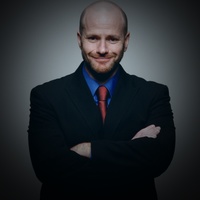

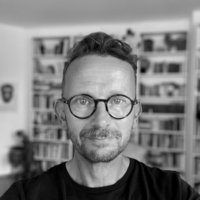

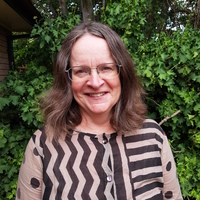

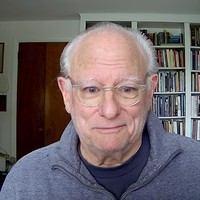

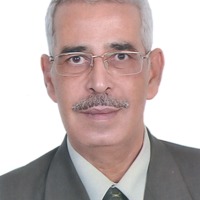
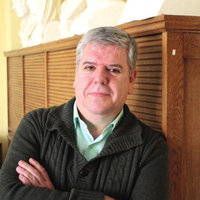
Uploads
Books by carlo bianchini
Un’ampia raccolta di saggi offre inediti punti di vista sulla committenza, sulla datazione, sulla progettazione, sulle soluzioni architettoniche e sulle caratteristiche costruttive del Tempietto a partire da approfondite ricerche storiche, da indagini condotte con l’uso di diverse tecnologie (dalla prospezione con georadar alla termografia a infrarossi, alla videoendoscopia), da due nuovi rilievi del monumento (con tecniche tradizionali e da scansione tridimensionale) e da quello dell’intero complesso monastico.
Contributi di: Laura Asor Rosa, Carlo Bianchini, Francesco Borgogni, Valeria Caniglia, Flavia Cantatore, Livia Fabbri, Francesco Paolo Fiore, Carlo Inglese, Fernando Marías, Lucia Morganti, Rossana Nicolò, Elisabetta Pallottino, Enrico Parlato, Antonio Sánchez-Barriga Fernández, José Sancho Roda, Manfred Schuller, Valentina White, Paola Zampa.
School, then as Abbot of the monastery of Bobbio, Archbishop of Ravenna and finally as Pope Silvestre II (999–1003), Gerbert always encouraged and promoted the study of the quadrivium (arithmetic, geometry, music and astronomy) also through the reintroduction to western Europe of ancient Greek-Roman scientific
culture, especially in the augmented Arab versions. Gerbert’s influence on western scientific thought refers not only to theory (i.e. the arabs’ decimal numeral system or some of Euclid’s theorems) being instead always balanced with practical applications that involve instruments (abacus, armillary sphere, astrolabe, etc.) and that immediately affect the lives of common people.
Papers by carlo bianchini
Un’ampia raccolta di saggi offre inediti punti di vista sulla committenza, sulla datazione, sulla progettazione, sulle soluzioni architettoniche e sulle caratteristiche costruttive del Tempietto a partire da approfondite ricerche storiche, da indagini condotte con l’uso di diverse tecnologie (dalla prospezione con georadar alla termografia a infrarossi, alla videoendoscopia), da due nuovi rilievi del monumento (con tecniche tradizionali e da scansione tridimensionale) e da quello dell’intero complesso monastico.
Contributi di: Laura Asor Rosa, Carlo Bianchini, Francesco Borgogni, Valeria Caniglia, Flavia Cantatore, Livia Fabbri, Francesco Paolo Fiore, Carlo Inglese, Fernando Marías, Lucia Morganti, Rossana Nicolò, Elisabetta Pallottino, Enrico Parlato, Antonio Sánchez-Barriga Fernández, José Sancho Roda, Manfred Schuller, Valentina White, Paola Zampa.
School, then as Abbot of the monastery of Bobbio, Archbishop of Ravenna and finally as Pope Silvestre II (999–1003), Gerbert always encouraged and promoted the study of the quadrivium (arithmetic, geometry, music and astronomy) also through the reintroduction to western Europe of ancient Greek-Roman scientific
culture, especially in the augmented Arab versions. Gerbert’s influence on western scientific thought refers not only to theory (i.e. the arabs’ decimal numeral system or some of Euclid’s theorems) being instead always balanced with practical applications that involve instruments (abacus, armillary sphere, astrolabe, etc.) and that immediately affect the lives of common people.